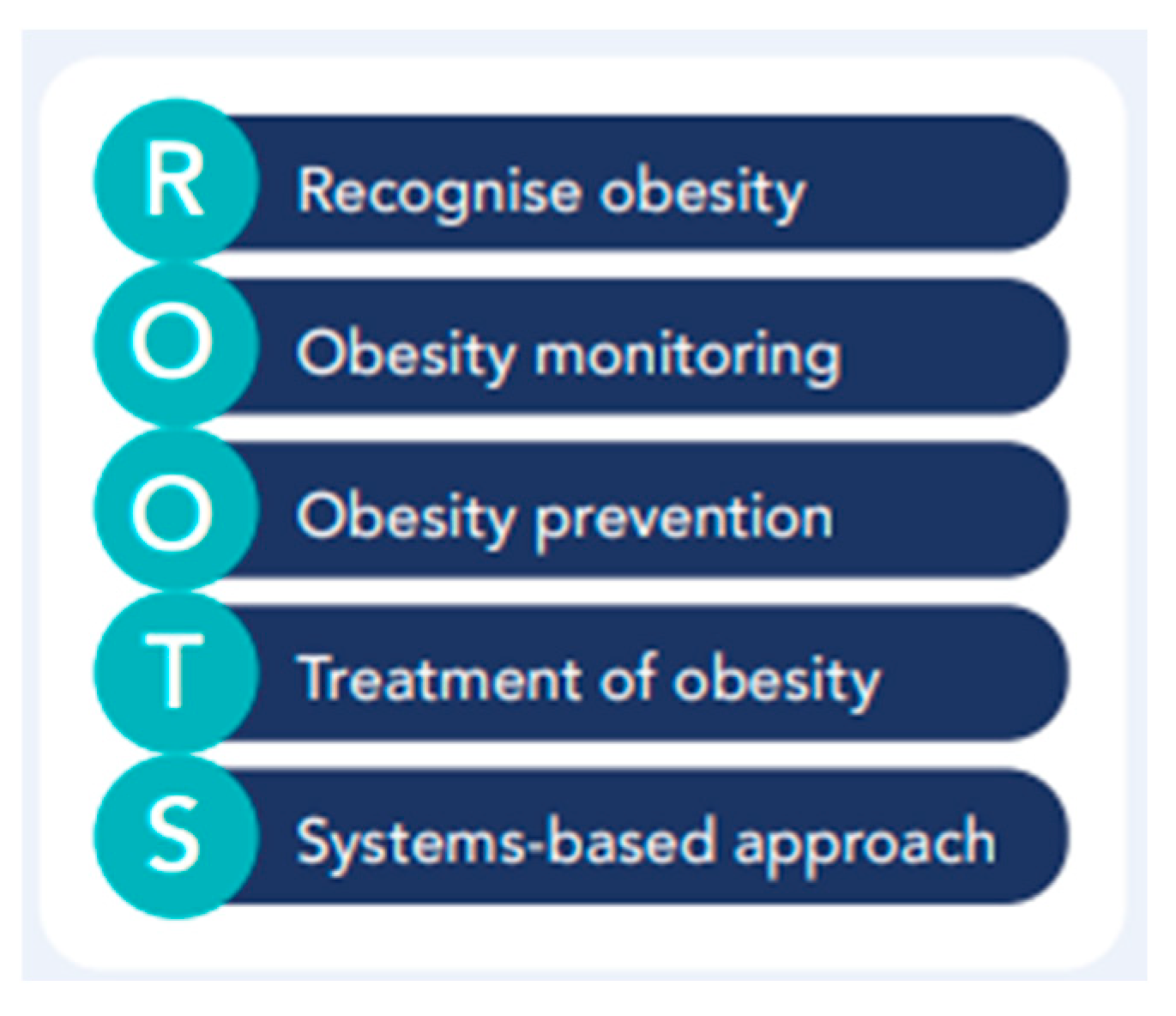Dietary Strategies for Obesity
Author Contributions
Funding
Conflicts of Interest
References
- World Health Organization. Obesity and Overweight. Available online: https://www.who.int/news-room/fact-sheets/detail/obesity-and-overweight (accessed on 11 September 2023).
- United Nations, Department of Economic and Social Affairs, Sustainable Development. Transforming Our World: The 2030 Agenda for Sustainable Development. Available online: https://sdgs.un.org/2030agenda (accessed on 11 September 2023).
- World Obesity Federation. World Obesity Atlas. 2023. Available online: https://data.worldobesity.org/publications/?cat=19 (accessed on 11 September 2023).
- Global Obesity Forum. Declaration Obesity and the Response to COVID-19. Available online: https://www.worldobesityday.org/assets/downloads/WOD_Declaration_FINAL_25_2_21_Compressed.pdf (accessed on 11 September 2023).
- Australian Institute of Health and Welfare. Australia’s Health 2020 in Brief; Australia’s Health Series No. 17 Cat. No. AUS 232; AIHW: Canberra, Australia, 2020.
- Australian Bureau of Statistics. National Health Survey: State and Territory Findings. 2018. Available online: https://www.abs.gov.au/statistics/health/health-conditions-and-risks/national-health-survey-state-and-territory-findings/latest-release#key-statistics (accessed on 13 September 2023).
- Organisation for Economic Co-Operation and Development. The Heavy Burden of Obesity: The Economics of Prevention. 2019. Available online: https://www.oecd.org/health/the-heavy-burden-of-obesity-67450d67-en.htm (accessed on 13 September 2023).
- The State of Queensland (Queensland Treasury), Queensland Government Statistician’s Office. Queensland Compared with Other Jurisdictions, Census 2021. 2022. Available online: https://www.qgso.qld.gov.au/issues/11951/qld-compared-other-jurisdictions-census-2021.pdf (accessed on 13 September 2023).
- Queensland Government, Queensland Health. The Health of Queenslanders 2020: Report of the Chief Health Officer Queensland. 2020. Available online: https://www.health.qld.gov.au/__data/assets/pdf_ (accessed on 13 September 2023).

Disclaimer/Publisher’s Note: The statements, opinions and data contained in all publications are solely those of the individual author(s) and contributor(s) and not of MDPI and/or the editor(s). MDPI and/or the editor(s) disclaim responsibility for any injury to people or property resulting from any ideas, methods, instructions or products referred to in the content. |
© 2023 by the authors. Licensee MDPI, Basel, Switzerland. This article is an open access article distributed under the terms and conditions of the Creative Commons Attribution (CC BY) license (https://creativecommons.org/licenses/by/4.0/).
Share and Cite
Walker, J.L.; Littlewood, R. Dietary Strategies for Obesity. Nutrients 2023, 15, 4275. https://doi.org/10.3390/nu15194275
Walker JL, Littlewood R. Dietary Strategies for Obesity. Nutrients. 2023; 15(19):4275. https://doi.org/10.3390/nu15194275
Chicago/Turabian StyleWalker, Jacqueline L., and Robyn Littlewood. 2023. "Dietary Strategies for Obesity" Nutrients 15, no. 19: 4275. https://doi.org/10.3390/nu15194275




